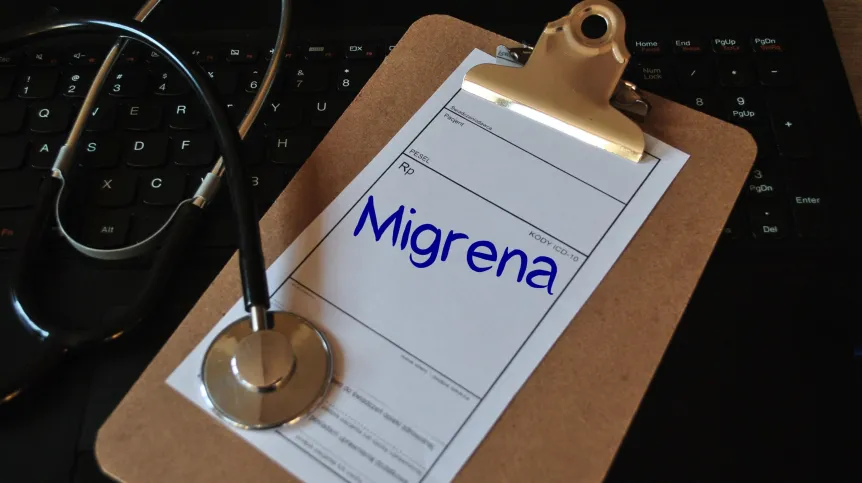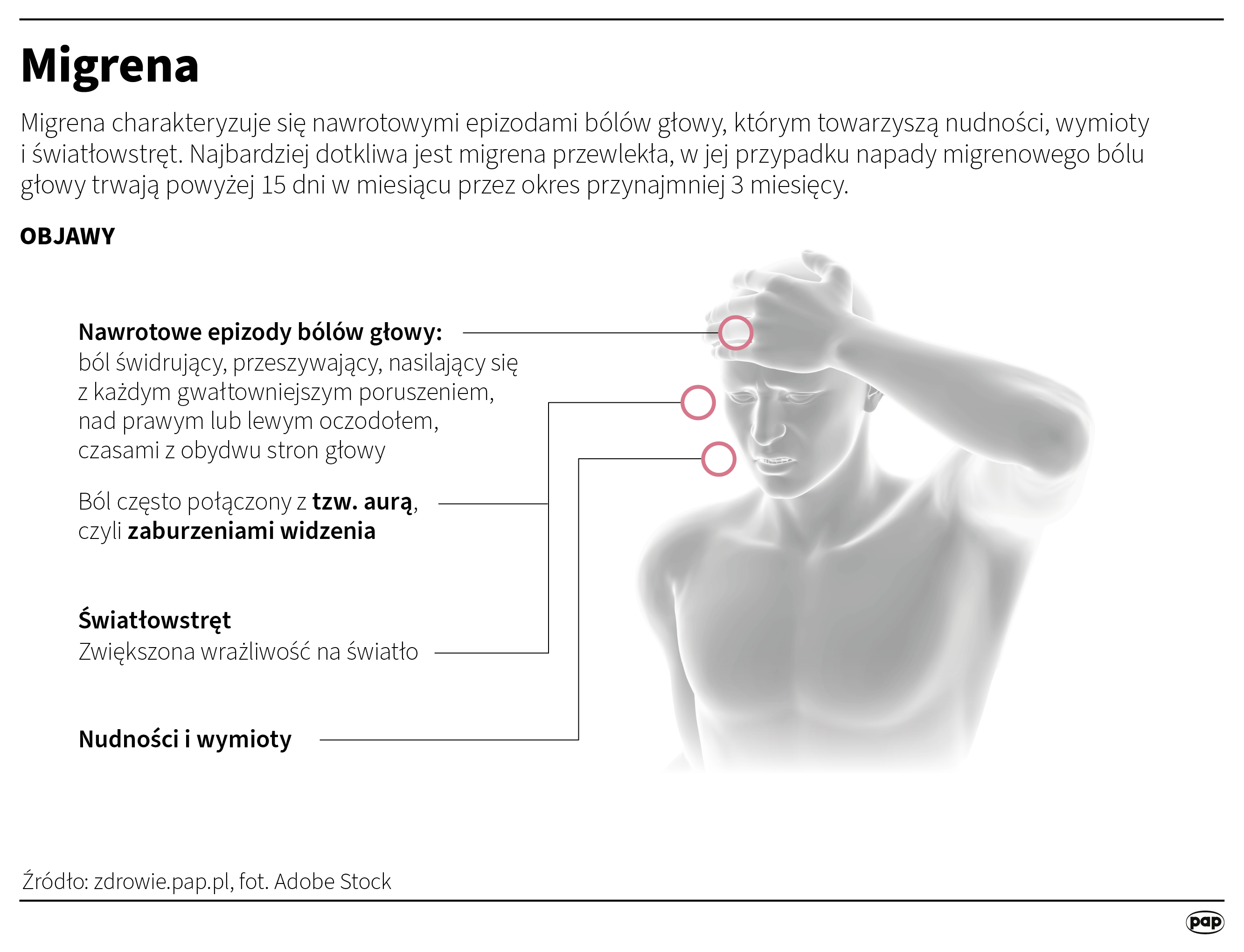
As many as 5 million people in Poland may suffer from migraines, making the condition a significant public health and economic burden, according to the largest national study on migraine to date.
Conducted by Dr. Marta Waliszewska-Prosół and her team at the Medical University of Wrocław, the research reveals that while diagnosis rates are relatively high, treatment is frequently inadequate and outdated.
“This is a huge number of people, which demonstrates the scale of the disease. We have also demonstrated that the burden of migraines in Polish patients is the highest of all European countries. Their quality of life is truly poor,” said Waliszewska-Prosół.
The study, titled Migraine in Poland, involved over 3,200 respondents aged 13 to 80, 87% of whom were women.
Divided into two analyses, the first published in The Journal of Headache and Pain (https://doi.org/10.1186/s10194-023-01575-4) examined migraine symptoms, comorbidities, quality of life, and disease burden. The second study, published in the journal Therapeutic Advances in Neurological Disorders (https://doi.org/10.1177/17562864251338675), presented the diagnostic and treatment patterns of Polish patients and identified their greatest challenges.

Despite high diagnosis rates - 93.6% of participants consulted a doctor and 90% received a formal diagnosis - many are prescribed outdated or ineffective treatments. The majority rely on over-the-counter painkillers such as NSAIDs, paracetamol, and codeine-based medications.
Nearly 60% reported using codeine-containing drugs, which can lead to complications such as medication-overuse headaches or chronic migraines. These were observed in 23% of participants.
“The most commonly used medications are nonsteroidal anti-inflammatory drugs, paracetamol, and codeine-containing medications, which are not satisfactory for migraines and not recommended for this condition,” Waliszewska-Prosół said. “Nearly 60% of Polish patients use codeine-containing medications, which carries a serious risk – they can lead to medication overuse headaches or the development of chronic migraines.”
Only 57% of respondents reported using triptans, the modern first-line treatment for acute migraine attacks, a figure researchers say remains too low given the medication’s proven efficacy.
Preventive treatment is especially lacking. Although nearly half of the participants met criteria for such therapy, only 11.5% received it. The most frequently used preventive drug was iprazochrome—an outdated medication lacking modern clinical support. Of the 18 people prescribed iprazochrome, 17 discontinued use.
Many patients abandon preventive treatments altogether due to side effects, high costs, or perceived lack of results—often without consulting a doctor. “This is a worrying phenomenon,” said Waliszewska-Prosół, “as treatment used too briefly may not produce lasting results, and discontinuing it without supervision is associated with the risk of recurrence.”
The study also points to confusion during diagnosis, with patients often consulting multiple specialists—including neurologists, ophthalmologists, ENT doctors, psychiatrists, and gynecologists—before a correct diagnosis is reached.
“Patients go from doctor to doctor. Their symptoms are often ignored; they are only advised to rest and take a widely advertised painkiller, Waliszewska-Prosół said. “In my opinion, there is often a lack of humility among doctors regarding migraines, as well as a lack of consensus and cooperation among specialists. Many of them are afraid of this condition, and afraid to treat it.”
Polish migraine patients are also more likely than those in other countries to consult pharmacists—35% reported doing so, compared to just 3.6% in Japan. Waliszewska-Prosół sees this as a sign of the need for better pharmacy education, especially given the risks associated with unsupervised drug use.
The condition significantly impairs daily functioning. Nearly 75% of migraine sufferers are bedridden during attacks, with an average period of disability lasting 18.6 hours. Only 0.4% said they could function normally during an episode.
In the two weeks preceding the study, 330 people had taken sick leave due to migraines, while over half went to work despite symptoms. Of those who did, 86% said their productivity was reduced.
“This clearly shows that presenteeism, or attending work despite illness, is the norm among migraine sufferers, and at the same time, a huge burden on employers and the economy,” said Waliszewska-Prosół. “Contrary to appearances, such behaviour is only a false savings for the system, because even if someone goes to work, their productivity is minimal.”
The mental health impact of migraines is also severe. The study found that 65.7% of sufferers displayed depressive symptoms and more than 20% had signs of anxiety. In addition, 83% experienced symptoms before an attack, and recovery typically took 16 hours after the pain subsided—showing that the disease affects patients before, during, and after migraine episodes.
The financial cost is another significant concern. Although partial reimbursement is available in Poland, the average monthly cost of treatment reached nearly 300 PLN, or more than 13% of monthly income for some patients.
“We need to make people aware that migraines are a serious illness, and not repeat that they're hysterical and it is just your nature,” said Waliszewska-Prosół. “Of course, it is easier to research and treat diseases whose effects are immediately visible: cancer, diabetes, etc. The main symptom of migraine is pain, invisible to those around them. But the social problem is enormous.”
Katarzyna Czechowicz (PAP)
kap/ agt/ amac/













